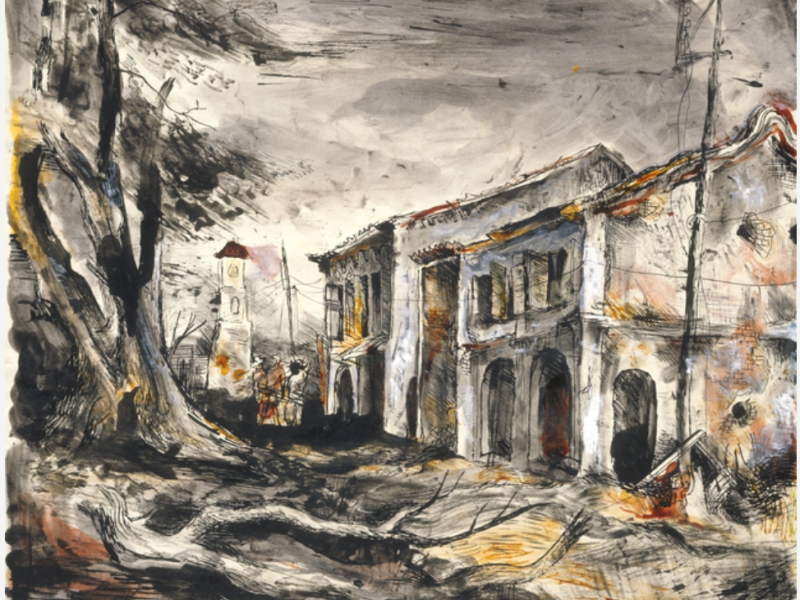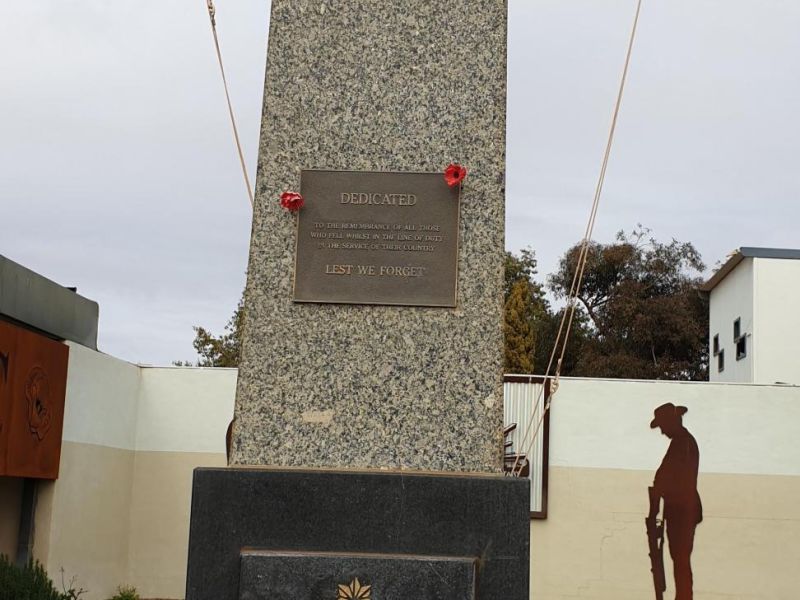Private Neil Edward Douglas Robertson, 2/28th Battalion
Neil Robertson was born on 18 January 1926 at Mount Magnet in Western Australia, the son of William and Bertha Robertson.
Neil’s mother died when he was nine years old. His father later remarried, and the Robertson family grew larger with the arrival of more brothers and sisters.
Neil Robertson went on to worker as a miner in Gwalia, a gold mining settlement that had grown around the Sons of Gwalia Mine from the late 1890s.
On 11 April 1944, having recently turned 18, Robertson enlisted for service in the Australian Imperial Force. He was posted to an infantry training battalion. In June he was injured, suffering from a broken nose, but apart from this incident his training seems to have gone smoothly.
In April 1945, Private Robertson embarked at Townsville, bound for overseas service. After landing on Morotai, an island in modern-day Indonesia, he was transferred to the 2/28th Battalion.
The 2/28th Battalion had been raised in Western Australia in 1940 before training in Palestine, and then fighting in and around Tobruk before moving to Syria and Lebanon for rest, training and garrison duties.
In 1942 it took part at fighting at El Alamein, suffering heavily at Ruin Ridge, before returning to Australia and reorganising for jungle operations. The battalion joined the fight against Imperial Japan in New Guinea in September 1943, before returning home in January 1944 for leave and extensive training.
In April 1945, Private Robertson joined his unit at Morotai, which was being used as a staging area in preparation for amphibious operations on Borneo.
The invasion was preceded by attacks by air units on Japanese bases and transport infrastructure across western and northern Borneo, as well as three days of minesweeping operations in the bay.
The 2/28th Battalion came ashore on the western side of the beach at first light on 10 of June, first meeting opposition at Flagstaff Hill at 10.45am. One of the battalion's companies captured the hill, while its other companies continued to advance. In the afternoon, Japanese troops, supported by tanks and mortars, attacked from the west of the hill.
Because of manpower shortages, the 9th Division were under orders to minimise casualties during the Borneo Campaign, and unit commanders relied heavily upon air and artillery support to complete their objectives.
By any measure the landings were successful. But success came a price. By the end of 10 June, the 2/28th Battalion had killed and captured many enemies but it too had suffered casualties.
Amongst the dead was 19-year-old Private Neil Robertson.
Hi remains were buried near where he fell but were later reburied at Labuan War Cemetery, where they lie today.
His grieving family chose this inscription: “His duty fearlessly and nobly done, ever remembered.”
Duncan Beard, Editor, Military History Section
Image: “Town, Labuan”, Donald Friend, 1945. Depicts the town of Victoria on Labuan, Borneo, the day after the landing of the 24th Australian Infantry Brigade, sent to re-occupy the island as part of the Borneo campaigns, June 1945.
- Australian War Memorial https://www.awm.gov.au/collection/AWM2021.1.1.35

 Australian War Memorial
Australian War Memorial